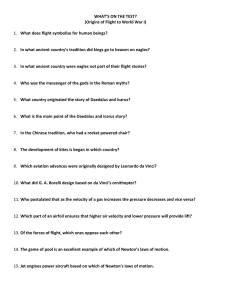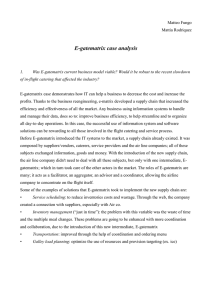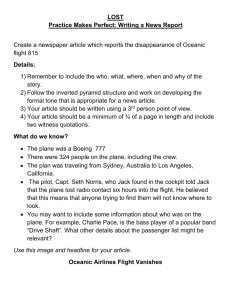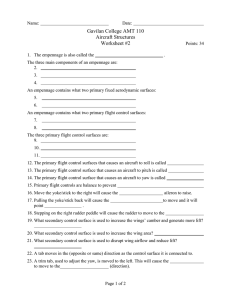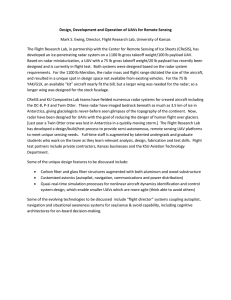Case Study Project: Search for the Malaysia Airlines Flight 370
advertisement
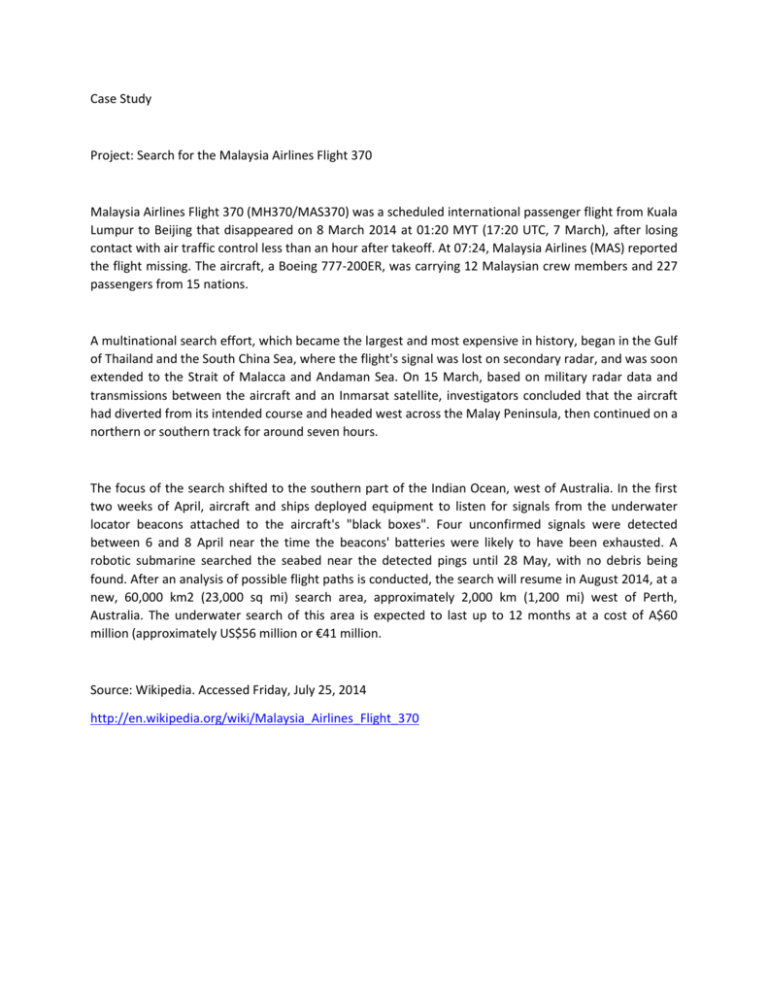
Case Study Project: Search for the Malaysia Airlines Flight 370 Malaysia Airlines Flight 370 (MH370/MAS370) was a scheduled international passenger flight from Kuala Lumpur to Beijing that disappeared on 8 March 2014 at 01:20 MYT (17:20 UTC, 7 March), after losing contact with air traffic control less than an hour after takeoff. At 07:24, Malaysia Airlines (MAS) reported the flight missing. The aircraft, a Boeing 777-200ER, was carrying 12 Malaysian crew members and 227 passengers from 15 nations. A multinational search effort, which became the largest and most expensive in history, began in the Gulf of Thailand and the South China Sea, where the flight's signal was lost on secondary radar, and was soon extended to the Strait of Malacca and Andaman Sea. On 15 March, based on military radar data and transmissions between the aircraft and an Inmarsat satellite, investigators concluded that the aircraft had diverted from its intended course and headed west across the Malay Peninsula, then continued on a northern or southern track for around seven hours. The focus of the search shifted to the southern part of the Indian Ocean, west of Australia. In the first two weeks of April, aircraft and ships deployed equipment to listen for signals from the underwater locator beacons attached to the aircraft's "black boxes". Four unconfirmed signals were detected between 6 and 8 April near the time the beacons' batteries were likely to have been exhausted. A robotic submarine searched the seabed near the detected pings until 28 May, with no debris being found. After an analysis of possible flight paths is conducted, the search will resume in August 2014, at a new, 60,000 km2 (23,000 sq mi) search area, approximately 2,000 km (1,200 mi) west of Perth, Australia. The underwater search of this area is expected to last up to 12 months at a cost of A$60 million (approximately US$56 million or €41 million. Source: Wikipedia. Accessed Friday, July 25, 2014 http://en.wikipedia.org/wiki/Malaysia_Airlines_Flight_370



